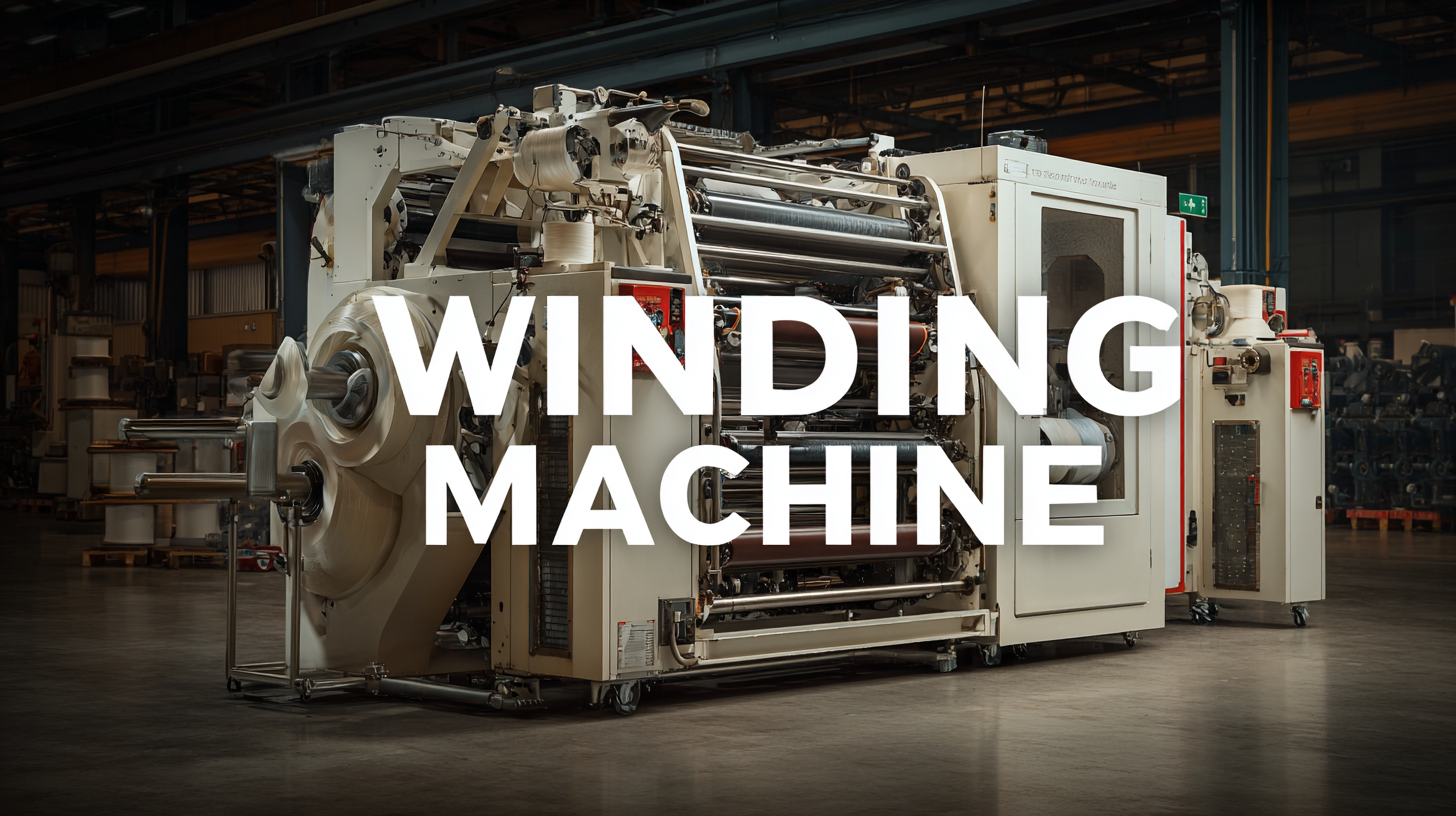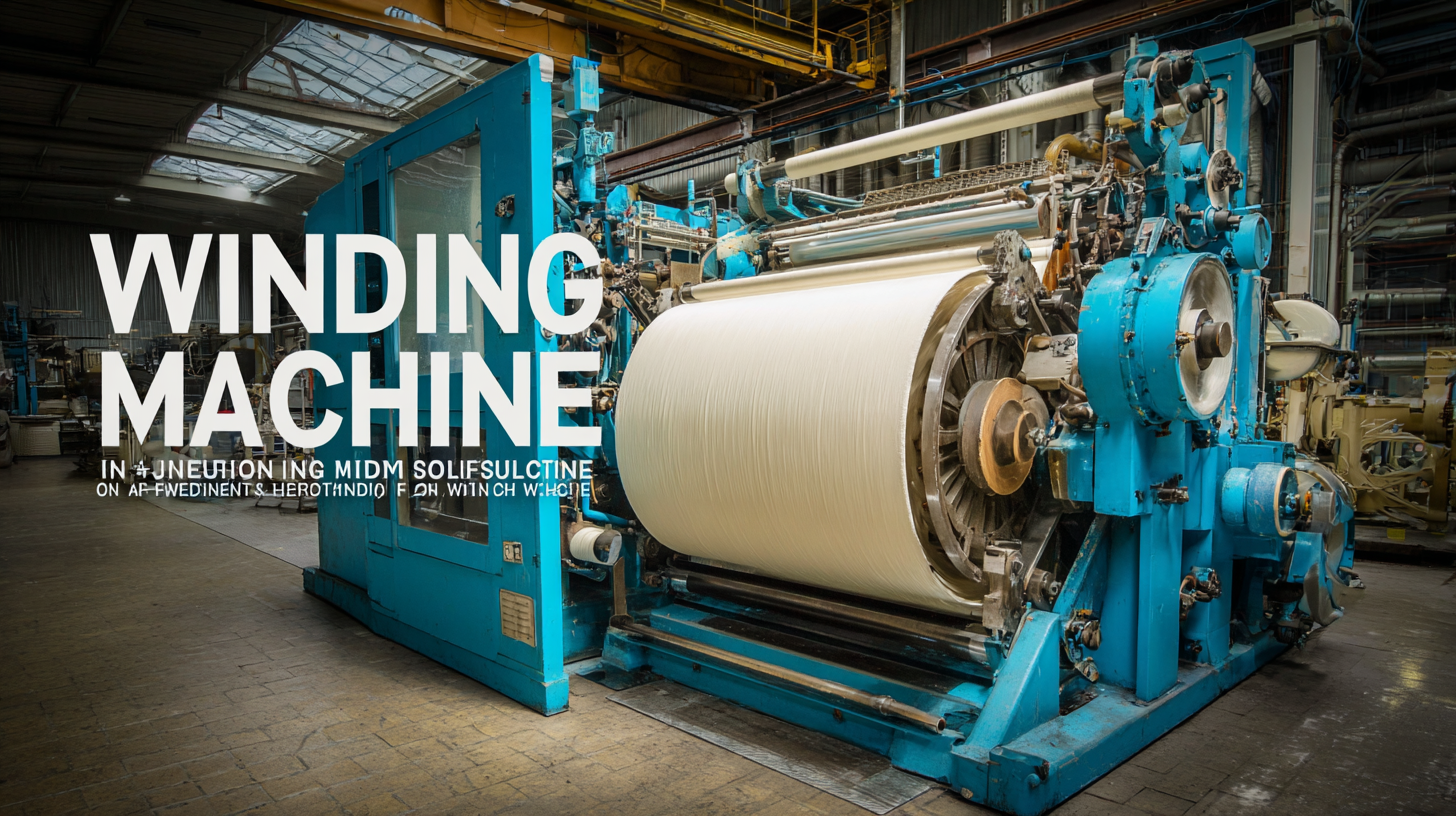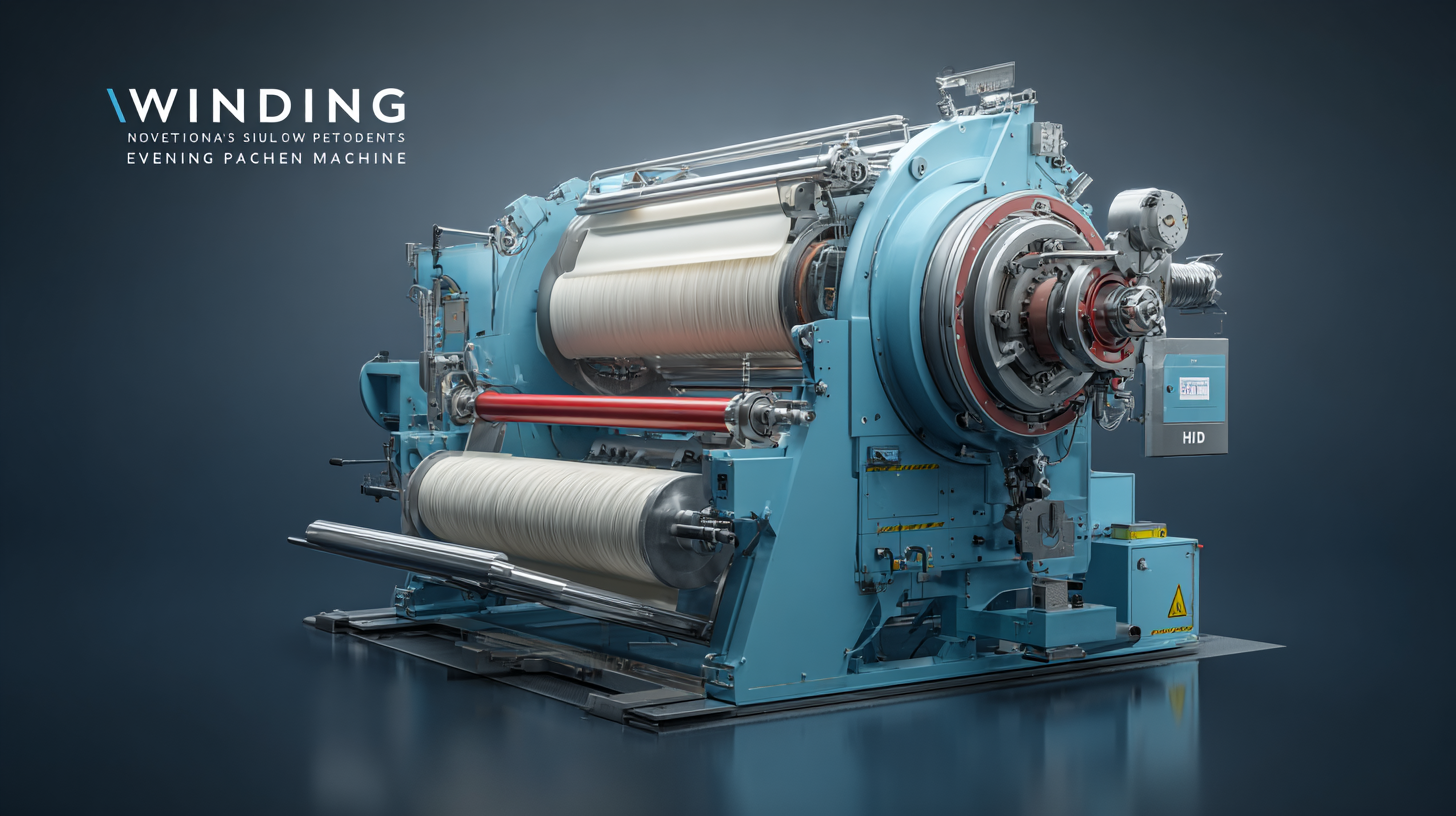
Innovative Solutions for Enhanced Production with the Best Winding Machine
In today's rapidly evolving industrial landscape, the quest for efficiency and enhanced production processes is more critical than ever. Central to achieving these goals is the use of advanced machinery, particularly the winding machine, which plays a pivotal role in various manufacturing sectors. This blog aims to provide a comprehensive tutorial on innovative solutions that can significantly improve your production workflow with the best winding machines available in the market. By exploring key features, technology integration, and best practices, we will delve into how adopting state-of-the-art winding machines can lead to higher productivity, improved product quality, and reduced operational costs. Whether you are an industry veteran or a newcomer eager to optimize your processes, this guide promises to illuminate the path toward enhanced production through cutting-edge winding machine technology.

Innovative Technology in Winding Machines for Modern Manufacturing
In the landscape of modern manufacturing, the role of winding machines has evolved significantly, driven by innovative technologies that enhance efficiency and precision. These advancements vitalize production processes, enabling manufacturers to meet increasing demands while optimizing operational workflows. With features like automated tension control and smart sensors, today’s winding machines ensure consistent quality and reduce material waste, leading to cost savings and improved profitability.

Moreover, the integration of IoT and data analytics in winding machines is revolutionizing how production facilities operate. By facilitating real-time monitoring and predictive maintenance, manufacturers can foresee potential issues before they escalate, minimizing downtime and maximizing throughput. This technological leap not only boosts worker safety but also enhances the overall productivity of manufacturing processes, making it imperative for businesses to invest in these cutting-edge solutions for competitive advantage. As innovation continues to shape the future of winding technology, companies that embrace these advancements will position themselves as leaders in the rapidly evolving manufacturing sector.
Key Features of Top-Notch Winding Machines in Chinese Factories
In the rapidly evolving manufacturing landscape, the demand for efficient and reliable winding machines has never been more critical, especially in Chinese factories. These machines play a pivotal role in various industries, from textiles to electronics, where precision and productivity are paramount. The latest models boast advanced features designed to enhance production capabilities and ensure high-quality outputs.
One standout feature of top-notch winding machines is their automation capabilities. With programmable software, these machines can be tailored to specific production needs, enabling quick adjustments between different winding techniques. Furthermore, many advanced models incorporate real-time monitoring systems that provide immediate feedback on the winding process, helping operators identify and rectify issues before they escalate. This not only reduces downtime but also enhances overall efficiency.
Another key aspect is the use of high-quality materials and components, which contribute to greater durability and longevity. Modern winding machines often incorporate innovative designs that minimize wear and tear, ensuring consistent performance under heavy workloads. Additionally, energy-efficient motors and mechanisms reduce operational costs, making these machines a smart investment for factories looking to boost their production capabilities while maintaining sustainability.
Innovative Solutions for Enhanced Production with the Best Winding Machine - Key Features of Top-Notch Winding Machines in Chinese Factories
| Feature | Description | Benefits | Typical Applications |
|---|---|---|---|
| Automatic Tension Control | Utilizes sensors to adjust the tension of the wire during winding. | Ensures uniform winding and prevents wire breakage. | Electric motors, transformers. |
| Multi-Spindle Configuration | Allows simultaneous winding on multiple spindles. | Increases productivity and reduces cycle time. | Industrial coils, magnetic cores. |
| Programmable Logic Control (PLC) | Automates the winding process based on preset parameters. | Enhances precision and minimizes human error. | Complex winding patterns, custom coils. |
| Servo Drive Technology | Provides precise control over the winding speed and position. | Delivers high performance and efficiency. | Medical devices, aerospace applications. |
| User-Friendly Interface | Intuitive touchscreen controls for easy operation. | Reduces training time for operators. | General-purpose winding tasks. |
Enhancing Production Efficiency: Benefits of Advanced Winding Solutions
In today's manufacturing landscape, enhancing production efficiency is paramount for staying competitive. According to a report by MarketsandMarkets, the global winding machine market is projected to reach $3.9 billion by 2026, driven by innovations that streamline processes and improve output quality. Advanced winding solutions not only reduce operational costs but also minimize material waste, which can contribute significantly to a company’s bottom line.
One key benefit of modern winding machines is their ability to integrate advanced technologies such as IoT and AI. These innovations provide manufacturers with real-time data analysis, enabling predictive maintenance and timely decision-making. A study from TechSci Research indicates that companies adopting automated winding solutions could see productivity improvements of up to 30%. By leveraging these advanced mechanisms, manufacturers can meet growing consumer demands while enhancing product precision and reliability, ultimately transforming the winding process into a vital component of their overall production strategy.
Enhancing Production Efficiency with Advanced Winding Solutions
Quality Control and Precision in Winding Machine Operations
In the realm of modern manufacturing, quality control and precision have become paramount, especially in winding machine operations. The integration of advanced automation technologies is revolutionizing the industry, as seen with the growing demand for precision coil winding machines. Recent market forecasts indicate a robust growth trajectory, with the market expected to expand significantly over the next decade. Automation not only enhances productivity but also ensures that each winding process adheres to stringent quality standards, thus minimizing defects and optimizing material usage.

Companies are increasingly adopting innovative solutions that harness the power of robotics and advanced control technologies. For example, robots are now utilized to load and unload components onto winding machines, significantly improving efficiency and accuracy. By streamlining operations and reducing manual labor, these automation solutions enhance the overall quality control processes, ensuring that even the most intricate winding tasks maintain high precision. This shift towards automation aligns with industry reports that highlight the importance of integrating adaptive technologies for maintaining consistency in production, critical to meeting the rising expectations of quality in sophisticated applications, such as composite tank manufacturing and textile machinery.
Case Studies: Successful Implementations of Winding Machines in Various Industries
In various industries, the implementation of advanced winding machines has transformed production efficiency and output quality. A case study in the automotive sector highlighted how a leading manufacturer adopted a new multi-axis winding machine, resulting in a 30% reduction in material waste. According to a report by the International Journal of Advanced Manufacturing Technology, the introduction of automated winding solutions can enhance productivity by up to 25%, significantly improving turnaround times and lowering operational costs.
Similarly, in the renewable energy industry, a wind turbine manufacturing company integrated a state-of-the-art winding machine into their production line, which enabled them to increase their output capacity by 40%. The report from the Global Wind Energy Council indicated that innovative winding technologies not only streamline the production process but also improve the structural integrity of components, leading to longer-lasting products. Such implementations showcase the pivotal role of specialized winding machines in driving growth across diverse markets.
